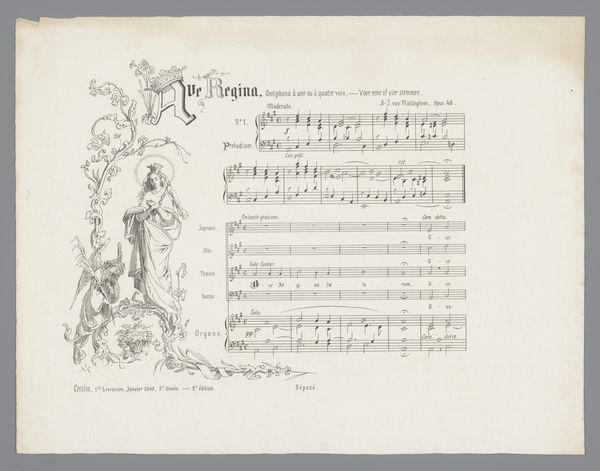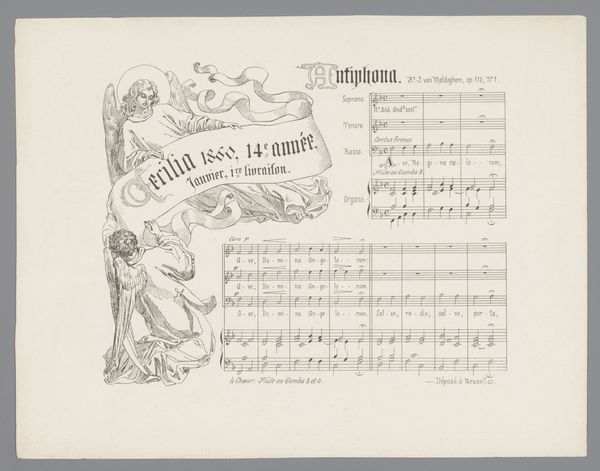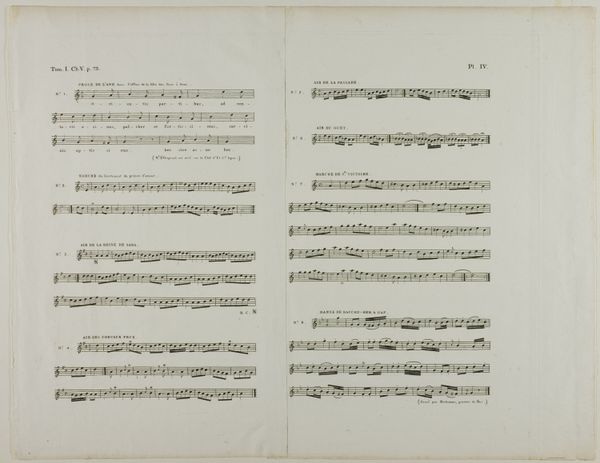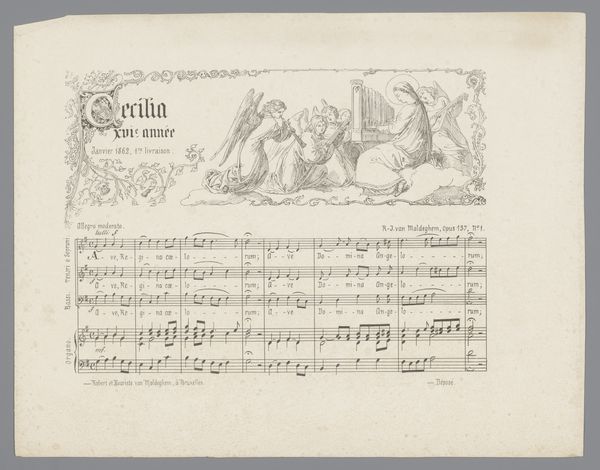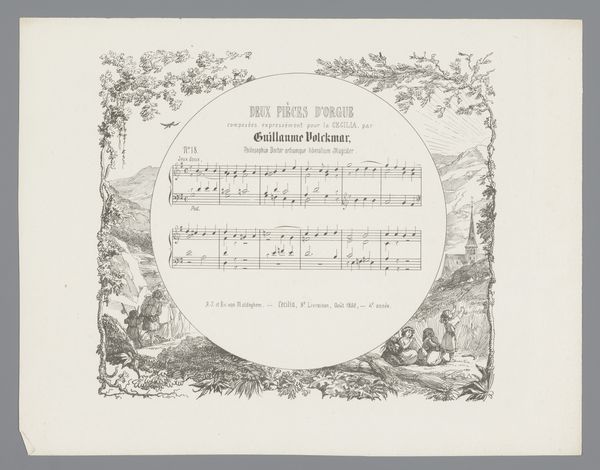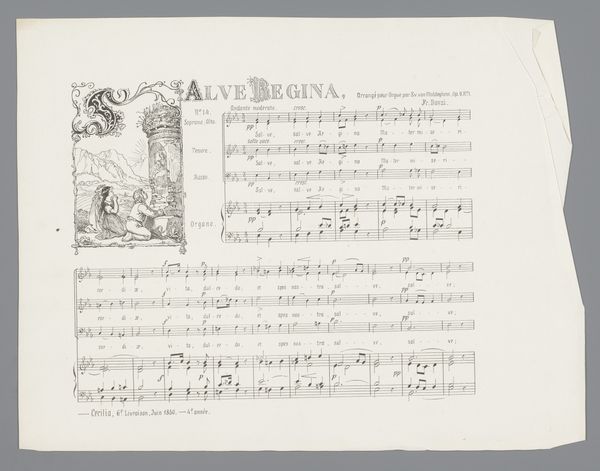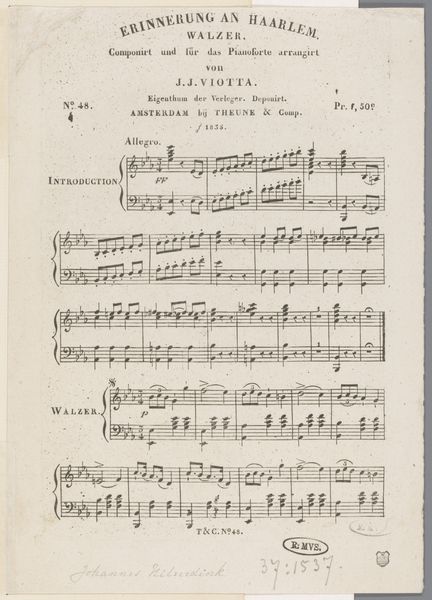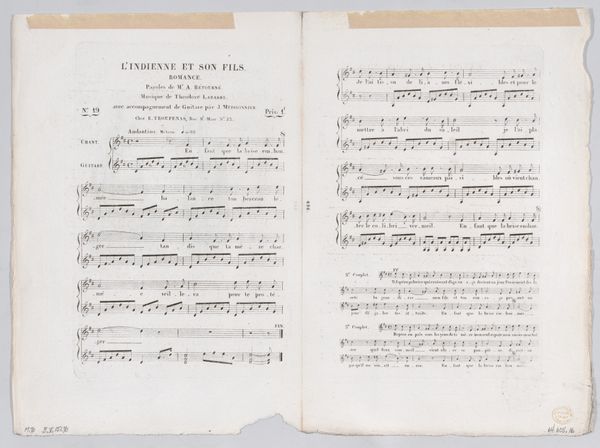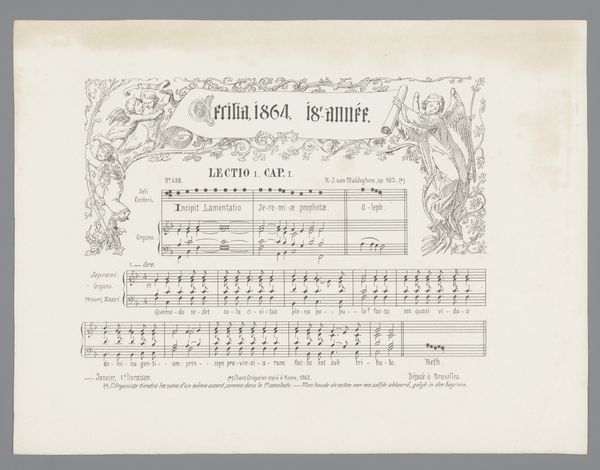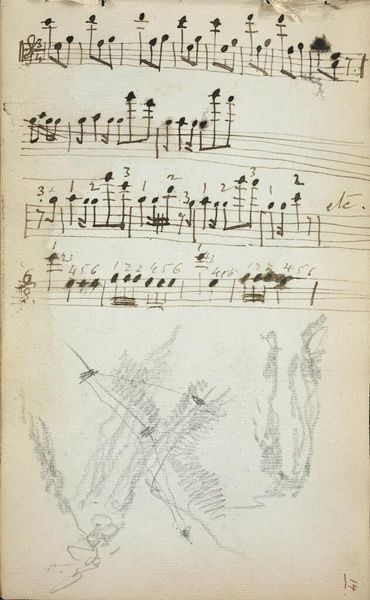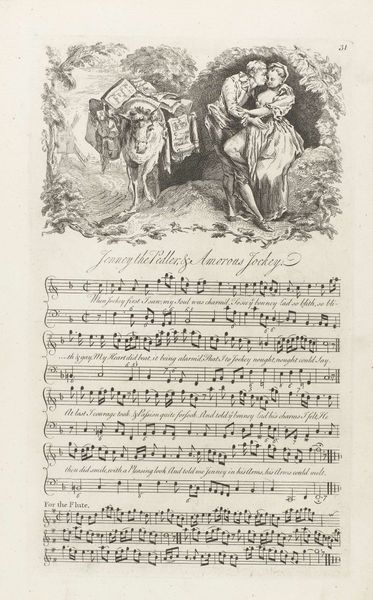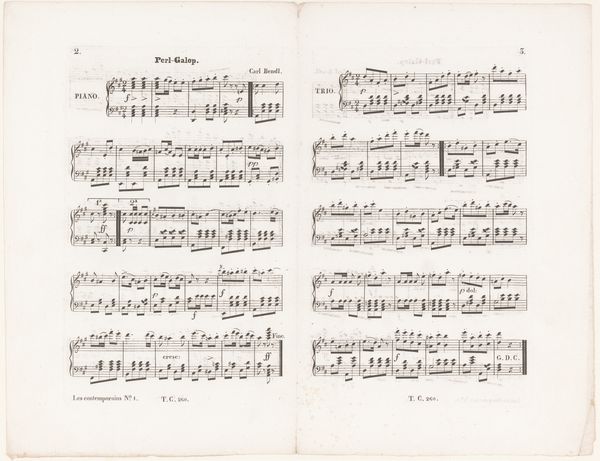
print, paper, engraving
#
allegory
# print
#
figuration
#
paper
#
romanticism
#
line
#
engraving
Dimensions: height 272 mm, width 358 mm
Copyright: Rijks Museum: Open Domain
Curator: This engraving, entitled "Three Angels with the Lamb of God," comes to us from Eugène Van Maldeghem, dating back to 1850. It presents a curious juxtaposition, wouldn't you say? Editor: It strikes me as starkly two-part; the sharp engraving contrasting with printed musical notes, but undeniably there's something melancholic to the angelic figures and their offering. I wonder, what paper was used and how widely distributed this work was? It speaks to accessible devotional imagery. Curator: Note the symbolic weight. The lamb, obviously a stand-in for sacrifice, but how its placement high above evokes the sense of unreachable divinity mediated through celestial figures. We cannot deny the work operates within a pre-existing lexicon. The angels offer more than simply physical labor, don’t you think? Editor: Absolutely. Looking at the printing itself, one has to admire the craftsman's skill in engraving the detailed lines giving form to these figures. And observe the border! Intricately crafted flora act as a frame, enclosing this small drama on paper, reminding us how even so-called 'mass produced' prints required extensive skilled labor. It would have taken an enormous amount of precision and careful tooling. Curator: The serpent at the base only enriches this allegory. This visual echoes age-old iconography of man's original transgression, creating a stark binary with purity symbolized by the lamb and the figures attending it. Editor: But its setting into musical annotation reveals even more regarding the labor process behind the images’ spread. Clearly the sheet was printed to aid musicians in song practice; the lamb & angel’s purpose was didactic – an instrument promoting religious learning for home consumption! How often do we engage directly within the nexus linking belief, commodity, art object, & devotional space? Curator: Precisely. What seemed simply devotional reveals layered social purpose. This piece marries art to everyday lives of 1850s practitioners – a reflection of broader cultural aspirations to fuse sacred symbolism with mundane reality, a trend we often see during times of rapid modernization. Editor: Agreed, I see here now just how much Van Maldeghem's romanticism touches on these themes, transforming simple song sheets into objects imbued with religious zeal but equally a keen demonstration the artistic craftsmanship. Curator: Ultimately, it allows us to think more broadly, how symbols and materials blend together into cultural practices that affect all. Editor: Exactly! This print invites us to engage critically with art, reminding us of its inherent links to not only faith but industry and the work put into image construction, so much can hide between lines!
Comments
No comments
Be the first to comment and join the conversation on the ultimate creative platform.
